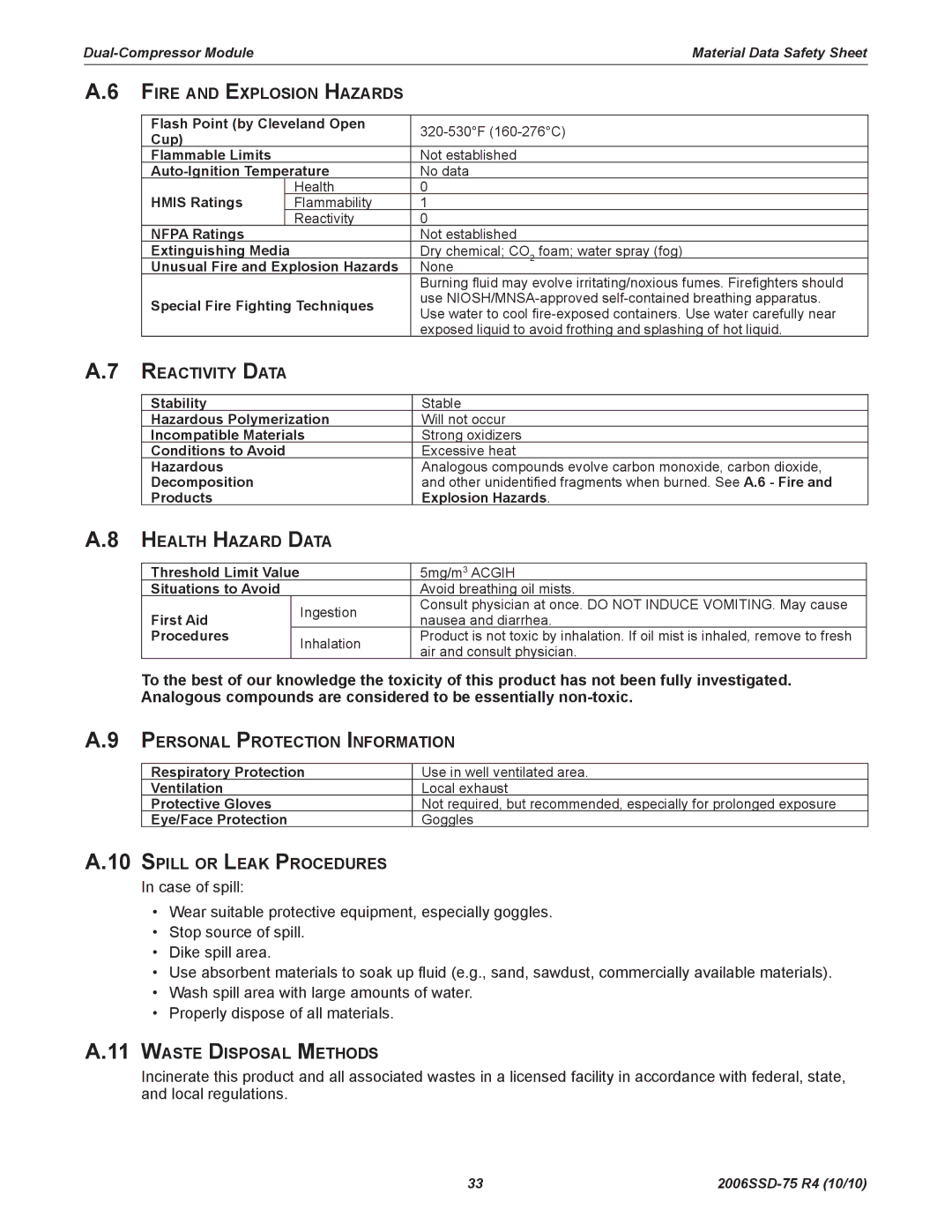A.6 Fire and Explosion Hazards
Flash Point (by Cleveland Open | ||||
Cup) |
| |||
|
| |||
Flammable Limits |
| Not established | ||
No data | ||||
HMIS Ratings |
| Health | 0 | |
| Flammability | 1 | ||
|
| Reactivity | 0 | |
NFPA Ratings |
| Not established | ||
Extinguishing Media |
| Dry chemical; CO2 foam; water spray (fog) | ||
Unusual Fire and Explosion Hazards | None | |||
|
|
| Burning fluid may evolve irritating/noxious fumes. Firefighters should | |
Special Fire Fighting Techniques | use | |||
Use water to cool | ||||
|
|
| ||
|
|
| exposed liquid to avoid frothing and splashing of hot liquid. | |
A.7 | Reactivity Data |
|
| |
|
|
|
|
|
| Stability |
| Stable | |
| Hazardous Polymerization | Will not occur | ||
| Incompatible Materials | Strong oxidizers | ||
| Conditions to Avoid |
| Excessive heat | |
| Hazardous |
| Analogous compounds evolve carbon monoxide, carbon dioxide, | |
| Decomposition |
| and other unidentified fragments when burned. See | |
| Products |
| Explosion Hazards. | |
A.8 | Health Hazard Data |
| ||
|
|
|
|
|
| Threshold Limit Value |
| 5mg/m3 ACGIH | |
| Situations to Avoid |
| Avoid breathing oil mists. | |
|
|
| Ingestion | Consult physician at once. DO NOT INDUCE VOMITING. May cause |
| First Aid |
| nausea and diarrhea. | |
|
|
| ||
| Procedures |
| Inhalation | Product is not toxic by inhalation. If oil mist is inhaled, remove to fresh |
|
|
| air and consult physician. | |
|
|
|
| |
| To the best of our knowledge the toxicity of this product has not been fully investigated. | |||
| Analogous compounds are considered to be essentially | |||
A.9 | Personal Protection Information | |||
|
|
| ||
| Respiratory Protection | Use in well ventilated area. | ||
| Ventilation |
| Local exhaust | |
| Protective Gloves |
| Not required, but recommended, especially for prolonged exposure | |
| Eye/Face Protection |
| Goggles | |
A.10 Spill or Leak Procedures
In case of spill:
•Wear suitable protective equipment, especially goggles.
•Stop source of spill.
•Dike spill area.
•Use absorbent materials to soak up fluid (e.g., sand, sawdust, commercially available materials).
•Wash spill area with large amounts of water.
•Properly dispose of all materials.
A.11 Waste Disposal Methods
Incinerate this product and all associated wastes in a licensed facility in accordance with federal, state, and local regulations.
33 |
